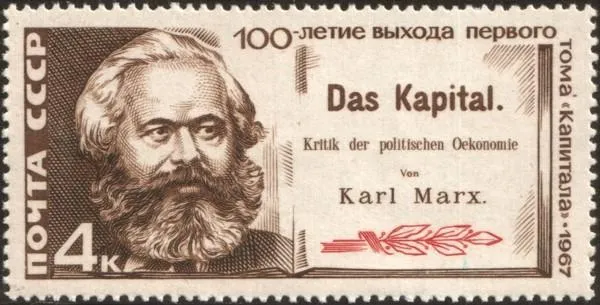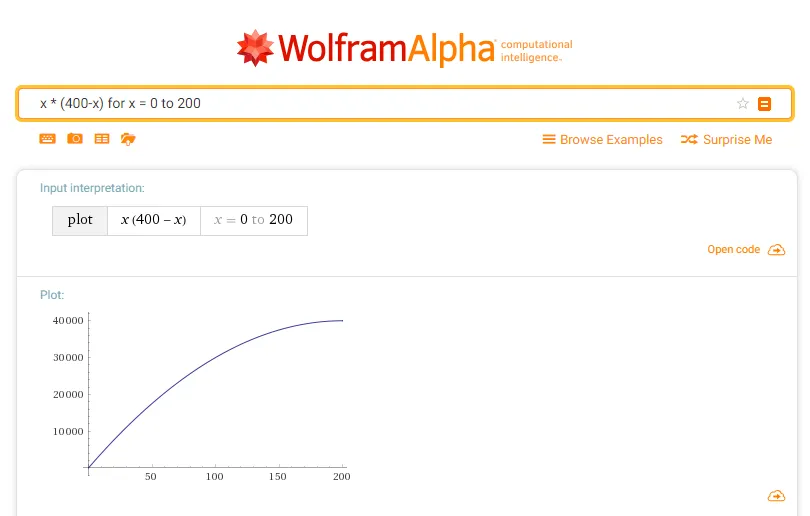If you're blogging regularly on Steem, how do you decide how much Steem Power you hodl? We're all just picking a random number, aren't we? But I discovered it's actually possible to calculate how much money you should invest, by matching the amount of time you're investing. If you're an active minnow, you're probably not investing enough money, making your work less productive than it could be.
I = L * C
Your income from Steem is the product of labor and capital. Now you know the relative contribution of labor and capital is different across industries. Education depends mostly on labor, while steel production depends mostly on capital. But here on Steem, both inputs are equally important, aren't they? The average reward for your posts is influenced by your voting power, and the number of votes you receive (votes per post times number of posts) is influenced by your activity level.
Equality
This means that the best strategy is to invest equal amounts of labor and capital into your account. And by capital I mean money, in particular Steem Power - which you actually own as another unit called Vests. Capital goods used for improving your content, like a DSLR camera, are on the side of labor in this formula. For simplicity's sake, I'll ignore them in my calculations.

Assumptions
I'll discuss quality and popularity below, but I assume that the time you spend on blogging and commenting here has a constant value, like a job that pays the same wage every day, whether you're doodling in a meeting or building an important prototype. I'm not counting reading time. (By the way, rewards were completely unpredictable when the reward distribution was exponential. I couldn't have written this post before Hard Fork 19.)
I'm not assuming that you only vote for yourself, but I do assume that labor and capital contribute equally to making friends and recruiting followers. For example, commenting on other bloggers' posts takes time, while rewarding your commenters with upvotes larger than the $0.02 dust threshold requires voting power. High rewards make your posts more visible on Trending pages, while blogging every day makes your posts more visible in feeds and on New pages.
Be square
Now, there's an interesting phenomenon in multiplication. Does anybody who paid attention in math class know the name? It's so basic that I don't know how to find it on Wikipedia. Anyway, it means that for a given sum of factors (let's say 6), you'll achieve the highest product when both factors are equal. For example:
3 * 3 = 9 2 * 4 = 8 1 * 5 = 5 0 * 6 = 0
We can visualize this on graph paper:

Here's an example with larger, more realistic numbers:
200 * 200 = 40,000 150 * 250 = 37,500 100 * 300 = 30,000 50 * 350 = 17,500 20 * 380 = 7,600 10 * 390 = 3,900 5 * 395 = 1,975 2 * 398 = 796 1 * 399 = 399So we see a sharp drop when one factor gets close to zero. And indeed, most Steem bloggers who have no voting power will receive next to nothing. A whale who didn't vote, post or delegate, but did power up, would get some interest income but would leave a lot of easy profit on the table.

The good news is that the two factors don't need to be exactly the same. As you can see on the graph from Wolfram Alpha, the product is still near the highest level when the factors are a quarter above/below the optimum.
Popularity
Is popularity an independent third factor? Maybe, but a large part of it will be the result of investing work and money in the past. Does @roelandp have 13,459 followers because he has a positive attitude and a pretty face, or because he organised Steemfest 1 and 2? Anyway, we can't treat popularity as an input in a formula, because you can't decide to invest 100 karma points more or less.
Wages
Labor is easily quantified in the form of an hourly wage. But it's not like we could all write for Der Spiegel or sell photos to Magnum if we wanted to. I think we can take three approaches:
- You estimate your share of the total effort spent on Steem, measured in bytes, words and posts. Then you divide the sum of all rewards by this number. This would be the most scientific method, but it's not easy to do on a small scale.
- You take the wages you'd get for the lowest tier of desk jobs, like content farms or Amazon Mechanical Turk.
- You take your wage if you'd be a professional content producer (journalist, photographer, financial analyst, philosopher, teacher, statistician, novelist), discounted for amateurism.
I'll use the third method here: I'll divide the hourly rate I'd get as a freelance journalist by 5.
Your actual day job is irrelevant, because being a CEO doesn't make you a better blogger than working as a cleaner. Even if your day job is the same as what you do on Steem, it should be discounted for amateurism because you can do whatever you want here. Or nothing when you're in a lazy mood. For artists who are free to make what they want anyway: you're not selling your art to the blockchain, just posting a picture of it - so you're working as an amateur photographer.
If you live in a developing country, use a rate between your local wage and international wages, depending on your audience.
Guesswork
Why not divide by 3 or 10 for an amateur discount? The point of doing the math with uncertain estimates and assumptions is to give you an objective target with a wide margin of error. Any number that's in the same order of magnitude is probably good enough. For example, if the calculation tells you that you should invest 1000 Steem and you actually have 25,000 Steem Power, it's time to start thinking about delegating that power, or working harder.
If you prefer other estimates and assumptions, please tell me in the comments. But you're not going to learn a lot from this if you adapt your calculation method to what you were doing anyway.
Volatility
Should we take into account that investing money in Steem Power is risky? You're locking it up while the price will go up and down like a roller coaster. At first, I wanted to apply another discount for this, but the same risk applies to investing labor, which you can never get back.

Priming the pump
Equal spending of capital and labor should be calculated across your entire blogging career, including the future. If you expect to spend 1 hour every day for a year, and your discounted hourly wage is 1 Steem, you should ideally power up 365 Steem at the start of the year, or at least make sure that 365 Steem Power is the average level during the year. Investing in Steem Power up-front will kick-start your blogging career.
Wealth
When I say 'investing', I mean keeping your Steem powered up. Of course, not everybody has the means to buy Steem. In that case, you can only hope to get lucky, and try to resist the temptation to cash out. The blockchain doesn't care that you're poor. Your success still depends on the same labor multiplied by capital formula.
Asymmetry
There's one difference between labor and capital on Steem: there's a limit to the amount of labor you can invest in one account, while the amount of capital you could invest in one account is unlimited. (Although it might be unwise to invest so much that you'd double the market price. Keep in mind that there's very little Steem freely available compared to the total market cap.) So when you try to calculate how much labor you should contribute or hire compared to a given amount of capital, there will be a maximum around 2500 hours per year - assuming that investing in higher than average quality would be unprofitable.
A whale could delegate Steem Power or loan Steem to multiple accounts, but that strategy would just spread the risk; it wouldn't increase profits. If you got @haejin to rent delegated Steem Power from you for a fair rate, I wouldn't be able to pay the same rate, because I don't post ten times a day and I don't have 30,000 followers.

Example
Because I'm not licensed to give financial advice, I'll use my own account for a calculation example. It helps that I actually worked as a paid news blogger in the past.
Edit June 26: Here's a spreadsheet so you can do the math for yourself.
It's weird that Steemit and other sources list a number of posts that includes comments. A friend asked me once why most of my posts didn't show up. I counted 54 posts manually. And 453 postings minus 54 real posts makes 399 comments.
I'm very slow, I need 3 hours per post on average. That's 3 * 54 = 162 hours.
10 minutes per comment = 399 / 6 = 66.5 hours.
Total time spent: 228.5 hours
Expected career: 228.5 * 2 = 457 hours
My professional wage would be around 30 Steem per hour.
Amateur discount: 30 / 5 = 6.
457 hours times 6 Steem per hour makes 2742 SP in total.
If you peek in my wallet, you'll see that I actually have only 418 Steem Power. If we include delegated SP I rented, it's 762. And there's some small change in a number of other accounts that I haven't spent much time on.
Conclusion: I should invest more money. But I don't have any. So you should delegate Steem Power to me!

Now I wrote a lot of words - probably not a wise investment. But this could be the basis for a simple Steem app, that would calculate your recommended investment, maybe even without asking any questions. If you're able to create such an app, feel free to do so as long as you credit @edb for the idea.